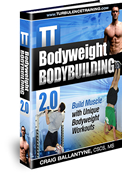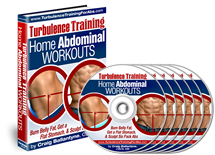Low Back Pain
 A cool inexpensive way to preform an Active Release Technique in your own home is to use a foam roller. It’s a great way to get that blood flowing to the muscle tissue keeping the tissue healthy.
A cool inexpensive way to preform an Active Release Technique in your own home is to use a foam roller. It’s a great way to get that blood flowing to the muscle tissue keeping the tissue healthy.
Today Dr. Michael Sommers helps us to recognize some of the symptoms we need to start paying attention to that can cause low back pain..
****************
CRAIG BALLANTYNE: The last thing I’ll ask you about, because I know you’ve got to run off and take the little guy to the doctor. But low back same as what we just talked about with the shoulder blades, proper posture and lifting technique.
MICHAEL SOMMERS: I was going to get into this a second ago with trying to understand – how do you know when there’s a problem? How does anybody know when there’s an injury developing? And what I hear in the clinic day in and day out – someone comes in, major low back pain. How did it happen? We’re talking about someone like yourself, someone with a lot of muscle, a really fit guy. How did this happen? I’m sure listeners out there will have had this experience.
Reached down to put a sock on. That’s how the injury happened. That doesn’t make a whole lot of sense at first glance if you don’t know anything about the physiology. You could understand it if you were lifting a truck tire or you’re carrying an old fridge out of your house and you lost your balance. That’s an obvious huge stimulus, huge load for the low back to take. But why the sock situation? Why is it so common that someone reaches down for something completely what would seem totally innocuous and then we have this massive pain cascade that takes hold after that?
And the reason is that people aren’t aware of the signs and symptoms of a problem building. And inevitably when I ask the person, “Was there anything leading up to this?” Sometimes they say, “No, no,” at first. But when we probe a little bit what you find is that their body had been talking to them before that. They had been stiff and achy a few times over the week and it had kind of been getting a little bit worse but it didn’t seem out of the ordinary.
If you’re feeling anything out of the ordinary like stiff and achy, especially in your low back, and there’s not really a reason for it that’s a problem developing. That means that over the course of your day there’s something happening.
Whatever position you’re taking, whether it’s in your office chair, whether it’s in the gym, whether it’s the way you’re running, if it’s how you’re picking up your kid, you’re a carpenter and you do things a particular way, you’re a teacher and you have to sit.
Whatever it is, there’s some kind of mechanism that’s leading us to a pathology. Something isn’t being done right. Your body is not being used properly. And there is slow, what we call creep is the term we use in the muscle tissue, because something is happening to create a creeping of the tissue where it’s either elongating or it’s being pulled in a direction it doesn’t want to go in. And that’s what that feeling is that you’re getting.
So for those of you out there, if you’re starting to feel tight and tender in the back of the shoulder – and we didn’t get a chance to talk about your elbow too – if there are little twinges happening in your elbow, don’t ignore those things. Craig, you’re great at noticing these things. And it takes some body awareness. That’s not easy. But you have to learn to listen to your body. You have to learn to say, “Okay, this is an issue. It’s out of the ordinary. I need to have someone who knows what they’re doing just evaluate it quickly.”
If it’s gone within 24 hours and you never feel it again maybe it was a one-off. That happens. On the other hand, if it’s developing, if it’s becoming in any way more severe, more intense, more frequent you need to take action on that. And if you don’t, more often than not it’s an overuse injury and it’s going to become something that is not only more painful but will take longer to get rid of and will be generally a bigger pain in your rear end. So with low back stuff I hear that all the time. Tight and tender.
And getting back to the question about what is it about position or posture, most of the time it just has to do with the fact that the person has some kid of faulty mechanics. It comes down to what the shape of their spine is that they inherited from their mom and dad, and how that spine is impacted by what they’re doing from day to day. Lots of people looking for, “What are the best stretches, what are the best core exercises for low back?”
And my answer is it depends. It depends on how you’re shaped. It depends on what that back goes through from day to day. And if you understand how those two relate then you can create a program specific to that person, whether it involves more glute firing which I find that I do with almost everyone.
There are some people out there that don’t need that, but by and large we live in what I call a useless glute society where because of sitting or for whatever – and that’s probably the number one reason – our ability to take the load of our bodies, for our glute fibers to take that load, which they’re very well designed for if you understand the anatomy, we’re very bad at doing that. We don’t know how to use our glutes to take up the force.
And if you watch anyone, like yourself who knows a lot about training, you’ll see their glutes are a massive, massive contributor to most of the lower body, and even a lot of the upper body exercises they’re doing. So that’s another piece of advice that I would have for everyone out there, is try to get your glutes involved as much as possible. Have someone who you know who knows what they’re doing have a look at how you’re training, and if it’s being done in a safe way that will allow you to train for many years to come.
CRAIG BALLANTYNE: That’s perfect. I really appreciate it. And it shows what I’m trying to say with most people is that most exercises are total body exercises and not isolation in themselves. So thanks again, Dr. Sommers. We can definitely have another chat another time. We’re going to get a lot of questions back. But I really appreciate your time. So again, thank you.
MICHAEL SOMMERS: My pleasure, Craig. And I look forward to talking to you again.
CRAIG BALLANTYNE: Okay, great. And everyone, if you are in Toronto, again, visit Dr. Sommers at EvolveChiropractic.com. And until next month this is Craig Ballantyne from TurbulenceTraining.com. Bye-bye everyone.